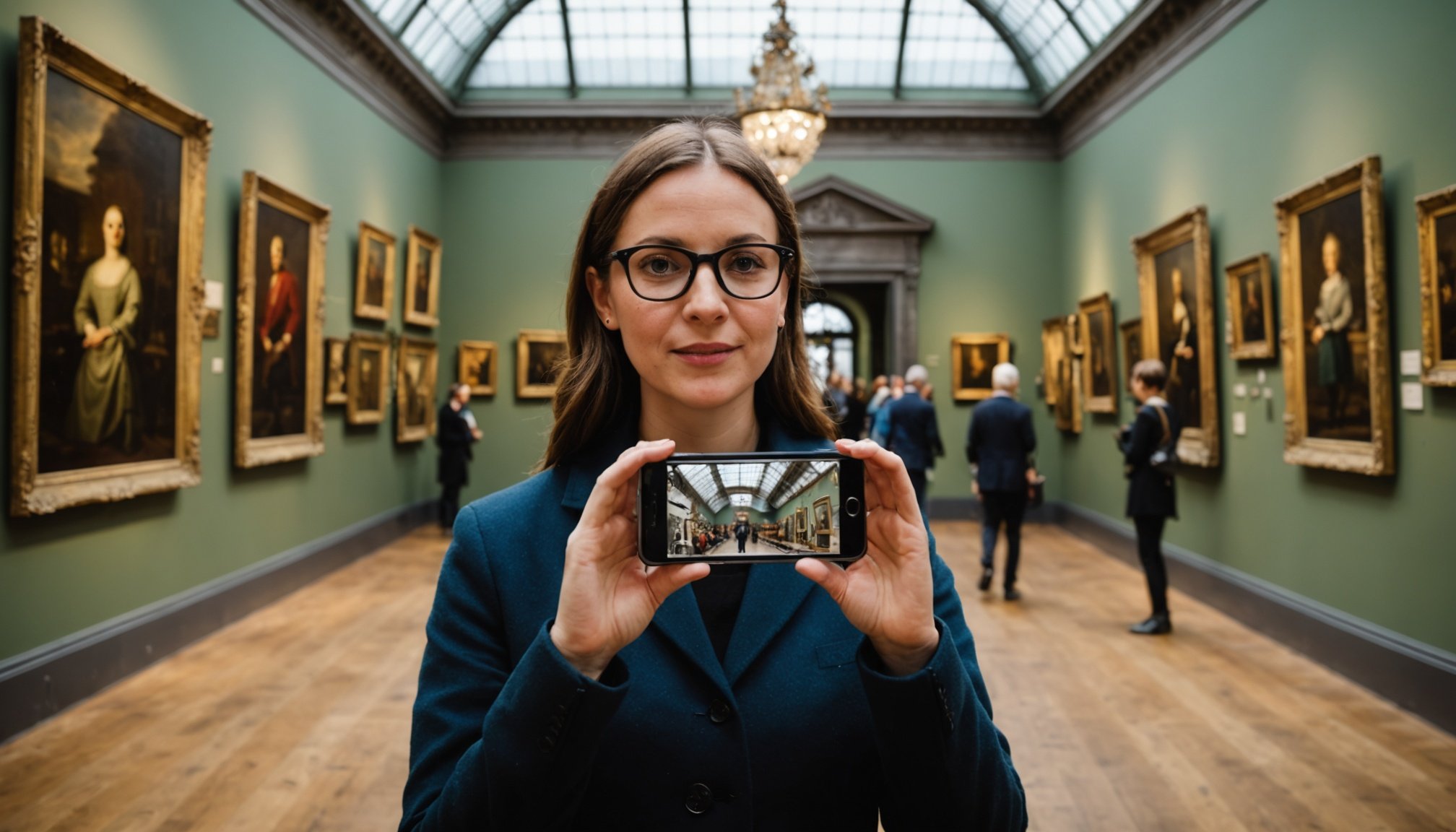Overview of Augmented Reality in Museums
Augmented Reality (AR) is a cutting-edge museum technology that superimposes digital information, such as images or sounds, onto a user’s real-world environment. In the context of UK museums, AR plays a pivotal role in transforming the way visitors engage with exhibits. Initially, AR began as a niche technology, primarily used for niche applications. However, over recent years, its integration into museum settings has become more mainstream. This shift is largely due to advancements in mobile technology and an increasing demand for innovative visitor experiences.
In essence, AR allows museums to create immersive experiences that go beyond traditional displays. For instance, with AR, visitors can explore historical artefacts in a more engaging manner, such as viewing a digital reconstruction of an ancient ruin while standing amidst the physical remains. Additionally, AR can provide contextual information, making exhibitions more informative and interactive.
Also read : Key components for developing a successful digital transformation strategy for uk enterprises
The significance of AR in enhancing visitor experience is substantial. It offers a dynamic, participatory way of learning, encouraging deeper interaction with museum content. Moreover, AR technology in UK museums not only appeals to a tech-savvy audience but also makes exhibits more accessible to a wider demographic, fostering greater cultural engagement.
Examples of UK Museums Utilizing Augmented Reality
Augmented reality (AR) is transforming how UK museums present their collections, offering virtual tours and enriching AR experiences for visitors. Here’s how some iconic institutions are employing these innovations.
Have you seen this : Effective ways to integrate voice recognition technology into uk healthcare applications
The British Museum
The British Museum has embraced AR by enabling visitors to delve deeper into its vast artefacts and collections. Through their app, users can take virtual tours, exploring exhibits in greater detail and gaining additional insights not visible to the naked eye. This immersive experience has been positively received, with visitors praising its ability to bring history to life.
Natural History Museum
At the Natural History Museum, AR experiences allow visitors to interact with life-sized dinosaurs and other prehistoric creatures. Through the use of AR technology, users can experience these exhibits as if they were present in the real world, providing an educational yet entertaining journey. This approach enhances understanding and engagement with the natural world.
Tate Modern
Tate Modern offers AR tours where artworks are overlaid with digital information, providing users with a comprehensive view of the artistic process and historical context. Visitor feedback has highlighted the impact of these experiences on educational outreach, making art more accessible to diverse audiences. Accessibility and engagement have seen significant improvement thanks to these technological advancements.
How to Use AR Apps in Museums
Using Augmented Reality (AR) apps enhances the museum experience, offering interactive engagement with exhibits. To begin, download an AR app compatible with the museum you’re visiting. Visit the app store on your smartphone; search for the museum’s recommended AR app. Download and install it ahead of your visit. Ensure your device’s camera and location services are active for optimal functionality.
Once at the museum, utilise AR to explore features like guided tours and enhanced information. Open the app and select the exhibit you’re interested in. Point your device’s camera at specific displays to unlock augmented content such as videos, animations, or additional textual information. AR apps can provide behind-the-scenes details and rare artefact information, heightening your understanding and enjoyment.
For a seamless experience, keep these visitor tips in mind. Familiarise yourself with the app’s user interface before arriving. Adjust your device settings to prevent interruptions, and carry a portable charger if the tour is extensive.
In case of issues with AR technology, try refreshing the app or restarting your phone. For persistent troubles, seek assistance from museum staff who are usually experienced in handling these common queries.
Benefits of Augmented Reality in Museums
Augmented Reality (AR) is transforming museums by creating immersive and interactive exhibits that significantly boost visitor engagement. By overlaying digital information on physical objects, AR enhances the way audiences interact with and understand exhibits. This technology turns passive observation into active participation, facilitating learning engagement.
Visitors can explore layered content that extends beyond conventional displays. This method fosters deeper learning engagement as users can access information in a format that resonates with them personally. Unlike traditional formats which might limit accessibility, AR ensures exhibits cater to diverse audiences, including those with special needs, by offering tailored content and experiences.
Furthermore, AR significantly aids information retention. By engaging multiple senses and offering unique learning paths, it promotes a more memorable learning experience. Studies suggest that when visitors partake in interactive activities, such as AR-powered scavenger hunts or historical reenactments via their smartphones, they are more likely to remember the information.
In essence, AR not only enhances the visitor enhancement experience by making learning fun but also transforms museums into inclusive, interactive spaces. This bridges the gap between history and contemporary audiences, ensuring that everyone can enjoy the richness of museum collections.
Recommendations for AR Experiences in UK Museums
Augmented Reality (AR) is revolutionising how visitors engage with museums in the UK, offering immersive experiences that deepen understanding and enjoyment.
Top AR Apps for Museum Visits
For an enhanced museum experience, several recommended apps have become indispensable tools. The Smartify app stands out, allowing visitors to scan and instantly learn more about artworks. Google Arts & Culture offers virtual tours and detailed views of exhibits, while Artivive brings static artworks to life with animated content. These apps are pivotal in increasing museum engagement by providing interactive and enriched educational content, making them must-have companions for any museum visit.
Special AR Exhibitions
Museums are increasingly showcasing special AR exhibitions that captivate and educate. For instance, the British Museum’s limited-time AR exhibit on ancient civilisations transports visitors back in time, offering a virtual journey through history. The Natural History Museum is also leveraging AR to display extinct species in their natural habitats. Such exhibits not only enhance visual appeal but also engage visitors on a more profound level, fostering a unique blend of learning and entertainment.
Visitor Testimonials and Reviews
Visitor feedback highlights the success of AR in museums. Many commend the ease of access and depth of information provided by AR applications. Reviews often mention how AR significantly enhances their overall museum experience, encouraging repeat visits and sharing of recommendations with others.











